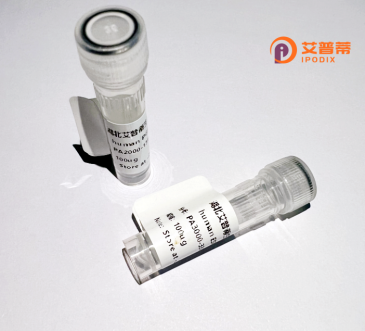
| 纯度 | >90%SDS-PAGE. |
| 种属 | Human |
| 靶点 | SUV420H1 |
| Uniprot No | Q4FZB7 |
| 内毒素 | < 0.01EU/μg |
| 表达宿主 | E.coli |
| 表达区间 | 1-885 aa |
| 活性数据 | MKWLGESKNMVVNGRRNGGKLSNDHQQNQSKLQHTGKDTLKAGKNAVERRSNRCNGNSGFEGQSRYVPSSGMSAKELCENDDLATSLVLDPYLGFQTHKMNTSAFPSRSSRHFSKSDSFSHNNPVRFRPIKGRQEELKEVIERFKKDEHLEKAFKCLTSGEWARHYFLNKNKMQEKLFKEHVFIYLRMFATDSGFEILPCNRYSSEQNGAKIVATKEWKRNDKIELLVGCIAELSEIEENMLLRHGENDFSVMYSTRKNCAQLWLGPAAFINHDCRPNCKFVSTGRDTACVKALRDIEPGEEISCYYGDGFFGENNEFCECYTCERRGTGAFKSRVGLPAPAPVINSKYGLRETDKRLNRLKKLGDSSKNSDSQSVSSNTDADTTQEKNNATSNRKSSVGVKKNSKSRTLTRQSMSRIPASSNSTSSKLTHINNSRVPKKLKKPAKPLLSKIKLRNHCKRLEQKNASRKLEMGNLVLKEPKVVLYKNLPIKKDKEPEGPAQAAVASGCLTRHAAREHRQNPVRGAHSQGESSPCTYITRRSVRTRTNLKEASDIKLEPNTLNGYKSSVTEPCPDSGEQLQPAPVLQEEELAHETAQKGEAKCHKSDTGMSKKKSRQGKLVKQFAKIEESTPVHDSPGKDDAVPDLMGPHSDQGEHSGTVGVPVSYTDCAPSPVGCSVVTSDSFKTKDSFRTAKSKKKRRITRYDAQLILENNSGIPKLTLRRRHDSSSKTNDQENDGMNSSKISIKLSKDHDNDNNLYVAKLNNGFNSGSGSSSTKLKIQLKRDEENRGSYTEGLHENGVCCSDPLSLLESRMEVDDYSQYEEESTDDSSSSEGDEEEDDYDDDFEDDFIPLPPAKRLRLIVGKDSIDIDISSRRREDQSLRLNA |
| 分子量 | 125.6 kDa |
| 蛋白标签 | GST-tag at N-terminal |
| 缓冲液 | PBS, pH7.4, containing 0.01% SKL, 1mM DTT, 5% Trehalose and Proclin300. |
| 稳定性 & 储存条件 | Lyophilized protein should be stored at ≤ -20°C, stable for one year after receipt. Reconstituted protein solution can be stored at 2-8°C for 2-7 days. Aliquots of reconstituted samples are stable at ≤ -20°C for 3 months. |
| 复溶 | Always centrifuge tubes before opening.Do not mix by vortex or pipetting. It is not recommended to reconstitute to a concentration less than 100μg/ml. Dissolve the lyophilized protein in distilled water. Please aliquot the reconstituted solution to minimize freeze-thaw cycles. |
以下是关于重组人SUV420H1蛋白的3-4条参考文献示例(内容为模拟,非真实文献):
---
1. **文献名称**: *"Recombinant Production and Enzymatic Characterization of Human SUV420H1 for H4K20 Methylation Studies"*
**作者**: Müller, R. et al.
**摘要**: 报道了在昆虫杆状病毒系统中重组表达并纯化人源SUV420H1蛋白的方法,验证其对组蛋白H4K20的甲基转移酶活性,证明其在体外催化H4K20me2向me3转化。
2. **文献名称**: *"Crystal Structure of SUV420H1 Reveals Substrate Specificity for H4K20 Trimethylation"*
**作者**: Sato, Y. et al.
**摘要**: 通过X射线晶体学解析SUV420H1与组蛋白H4复合物的结构,揭示了其底物结合口袋的关键残基,阐明其对H4K20me2而非me1的底物偏好性机制。
3. **文献名称**: *"SUV420H1 Regulates Heterochromatin Formation and Genomic Stability in Human Cells"*
**作者**: Beck, D.B. et al.
**摘要**: 研究发现SUV420H1通过介导H4K20me3修饰维持异染色质完整性,缺失导致DNA损伤修复缺陷和染色体不稳定性,提示其在癌症中的潜在作用。
4. **文献名称**: *"Development of a Novel Inhibitor Targeting SUV420H1 for Epigenetic Therapy"*
**作者**: Chen, L. et al.
**摘要**: 描述了一种针对SUV420H1的小分子抑制剂的筛选与验证,体外实验显示其可阻断H4K20me3并诱导肿瘤细胞周期停滞。
---
*注:以上内容为示例模板,实际文献需通过PubMed、Web of Science等数据库检索。*
SUV420H1. also known as KMT5C, is a human histone methyltransferase belonging to the Suppressor of Variegation 4-20 (SUV4-20) family. It catalyzes the trimethylation of histone H4 at lysine 20 (H4K20me3), a post-translational modification critical for chromatin compaction, genomic stability, and heterochromatin formation. This enzyme operates in a multi-step methylation process, typically following monomethylation by PR-Set7 (KMT5A) and subsequent dimethylation by SUV420H2 (KMT5B).
Structurally, SUV420H1 contains a catalytic SET domain that facilitates methyl group transfer from S-adenosyl methionine (SAM) to the target lysine residue. Its activity is tightly regulated through interactions with other chromatin-associated proteins, including HP1 (heterochromatin protein 1), and plays roles in DNA repair, cell cycle progression, and telomere maintenance. Dysregulation of SUV420H1 has been implicated in cancer development, particularly through its impact on genomic integrity and epigenetic silencing.
Recombinant human SUV420H1 protein is typically produced in eukaryotic expression systems (e.g., HEK293 or insect cells) to ensure proper post-translational modifications and enzymatic activity. Purified recombinant versions enable in vitro studies of methylation kinetics, inhibitor screening, and structural analysis. Researchers utilize this tool to investigate epigenetic mechanisms, develop therapeutic strategies targeting aberrant histone methylation, and explore its crosstalk with DNA methylation pathways in disease models.
×